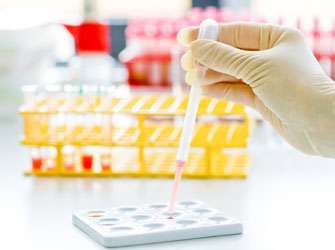Gene mutation as cause of breast and ovarian cancer

A change to the so-called TERT gene considerably increases the risk of breast and ovarian cancer. This is the result of a current, multicenter study in which the University Department of Gynaecology and the Comprehensive Cancer Center Vienna (CCC), an establishment belonging to the MedUni Vienna and Vienna General Hospital, were taking part.
The largest study worldwide on the subject of breast and ovarian cancer is now available with a sample of more than 100,000 patients from Europe, the USA and Asia. This international project, which is based on a European initiative, clearly proves the connection between changes to the TERT gene and the emergence of breast or ovarian cancer. The TERT gene is a location on chromosome 5 encoding a protein molecule which regulates the stability of chromosomes in the area of the breast and ovaries amongst other things.
Christian Singer, the head of the laboratory for hereditary breast and ovarian cancer and head of senology at the University Department of Gynaecology, says: "Cell growth in the human organism is enabled through the regulation of cell division, which is controlled by certain genes. Our study examined variations of the TERT gene, and our investigations were able to prove that certain "misspellings" in this gene considerably increase the risk of uncontrolled cell growth, that is, the emergence of cancer."
International collaboration
The Comprehensive Cancer Center played a part in this research project by enrolling patients in the study and doing a SNP analysis of their genetic material. (SNP, Single Nucleotide Polymorphisms, are variations in individual base pairs in a DNA sequence.) In the SNP analysis, sections of genes are examined for coding containing errors. "This is done by examining the DNA sequences systematically for ever such small defects. In some cases these defects are insignificant, in others, as in what has been examined here, they play a paramount role. The current findings will help us to understand cancer better. The more we know about such changes, the more we can say about the carrier's risk of getting cancer," explains Singer. "This study is an outstanding example of international collaboration. Such a large patient sample could never be attained at national level, where normally a maximum of 3,000 patients can be enrolled."
More information: "Multiple independent variants at the TERT locus are associated with telomere length and risks of breast and ovarian cancer." Published online 27 March 2013; doi:10.1038/ng.2566














